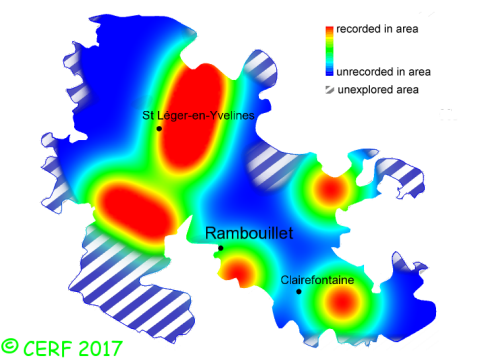|
Rhodocollybia butyracea var. asema (Fr.:Fr.) Antonín, Halling & Noordel.
|
common name(s) : Asema Butter Cap
New classification: Basidiomycota/Agaricomycotina/Agaricomycetes/Agaricomycetidae/Agaricales/Marasmiaceae
Former classification: Basidiomycota/Homobasidiomycetes/Agaricomycetideae
synonyms: Collybia butyracea-asema
(unconfirmed synonyms: Collybia asema)
edibility : inedible
|
|
|
The cap is with variable shades: dark brown without reddish tones, paler towards margin, ivory when dry, convex then expanded, with a sharp central umbo; its margin is striate when moist.
The cap surface is smooth, greasy to the touch.
The stem is hollow, swollen towards base, without ring.
The flesh is yellowish white, brown when damp, unchanging; its taste is mild; the odour is not distinctive or of rancid butter;
its texture is fibrous.
The gills are white, adnate, crowded (nb of gills per 90° ~ 20 ).
The spore print is white. This species is saprophytic.
It grows on the ground, in broad-leaved and coniferous woods, on a rather acid or calcareous soil, with beech, fir, spruce, larch, oak, birch.
The fruiting period takes place from July to December.
| Dimensions: | width of cap approximately 5 cm (between 2 and 8 cm) |
| | height of stem approximately 7 cm (between 4 and 10 cm) |
| | thickness of stem (at largest section) approximately 9 mm (between 5 and 15 mm) |
Chemical tests : none.
Distinctive features : very much like Collybia butyracea; but without reddish shades; paler umbonate cap; paler stem, in forests
Rhodocollybia butyracea var. asema is quite rare and scattered in the forest of Rambouillet, and is very frequent, more generally speaking
.
|  | | Above : distribution map of Rhodocollybia butyracea var. asema in the forest of Rambouillet |
|
page updated on 14/01/18